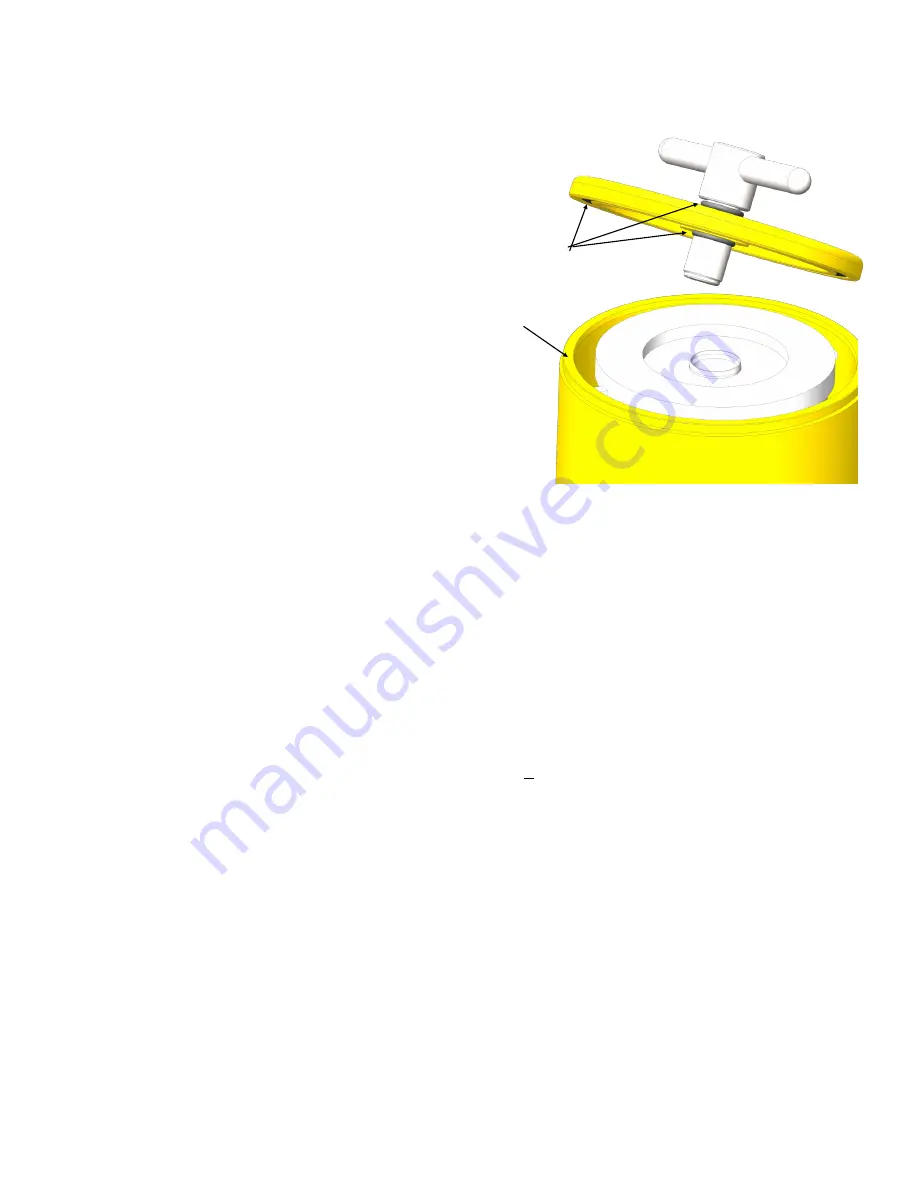
MK60SP 12/10/20 KEENAN FILTERS® by KTI Systems, Inc. www.keenanfilters.com
MK60SP FILTER INITIAL SERVICING
1. Make sure filter drain valve is closed.
2. Remove filter lid T-handle and lid assembly.
3. Slowly pour clean diesel fuel into filter until full.
Stop filling if leaks are noticed.
4. Clean T-Handle threads and lubricate T-handle
threads, T-handle O-rings (2ea) and lid square O-ring
with clean engine oil. Make sure lid O-ring is seated
in its groove and not twisted. Make sure lid O-ring
mating surface is clean on the element housing.
5.
Care should be taken not to damage the return tube
inlet when installing the T-handle.
Carefully insert
T-Handle and begin threading into the return tube.
Tighten until the lid bottoms and a resistance is felt.
Continue to tighten an additional 1/4 turn to seat O-ring.
NOTE: Before servicing the filter, re-check all connections for security. Check that fuel lines are
supported and will not interfere with other equipment or be near sharp objects, moving or hot equipment.
FUEL SYSTEM BLEEDING
1. Fuel system bleeding is removing the air out of the fuel system from the fuel tank pickup to the
engine secondary filter. Follow the engine manufacturers operators manual for bleeding
procedures.
POST INSTALLATION
O-RINGS
ELEMENT HOUSING
O-RING MATING
SURFACE
OPERATIONAL TEST
1. Turn on power to the K60SP/MA60SP filter. There will be a momentary 1-2 second pulse tone and the
“CHECK WATER” LED will illuminate. Next perform a normal engine start and warm up for 5 minutes.
Check for leaks.
2. With the engine at idle speed, close the fuel inlet shut off valve and monitor the vacuum gauge for a
steady increase in vacuum. Normally around 6”in Hg or 8”
+
2” in Hg, the “CHECK FILTER” LED will
illuminate and the audible pulse tone will sound. Press the mute switch on the KP300 panel to mute the
tone.
3. Shut down the engine and monitor the vacuum gauge needle. It should remain at the setting it was
showing when the engine was shut down. If there is an air leak between the shut off valve and the
engine lift pump, the gauge needle will move toward zero. Recheck all connections if a leak is detected
and re-test. (
A large leak could show up within 5 minutes, slower leaks will take more time)
4. If satisfied with the operational test, open the fuel inlet shut off valve and operate the engine at idle for
a few minutes. Next, check the system for leaks and operation under normal engine operation between
idle and full power. A normal vacuum reading should read below 3” in Hg at all power settings with a
clean filter and full tanks. When satisfied with the engine operation test, perform the normal engine
shutdown.
5. The OPERATIONAL TEST is a great way to check your system for integrity and warning. You can
perform the test after maintenance has been completed or during scheduled inspection checks.
PAGE 15


















